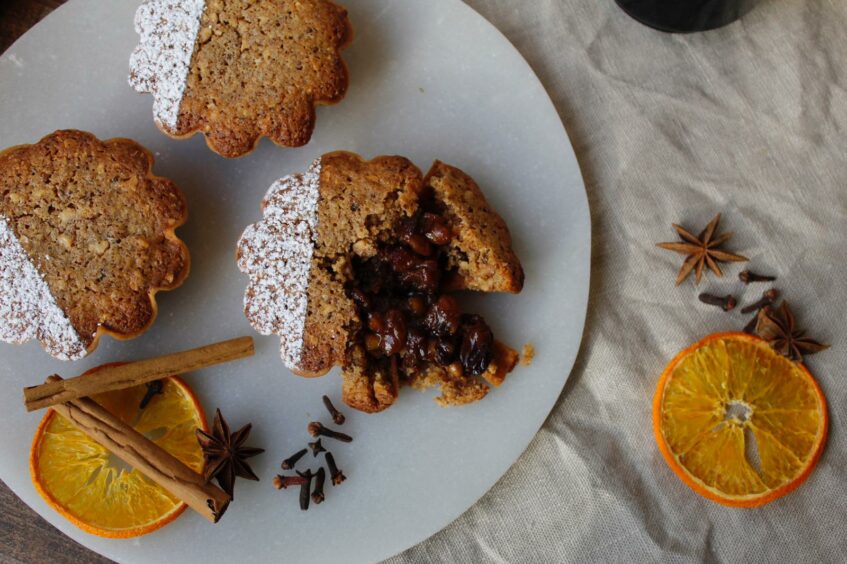
Bakers Rachel Morgan and Emily Cuddeford use only the best quality produce for their artisan breads and pastries but the single most important ingredient in each recipe is time – and lots of it.
Every item produced in the Twelve Triangles scratch bakery, which the pair founded in 2011, is made and shaped by hand on a three or four-day cycle using a special cold prove, slow fermentation process, with no additives, no improvers and only flour grown and milled in the UK.
Unlike modern mass-production methods – which swap the slow mixing and kneading process of traditional breadmaking for faster mixing and reduced proving time – the more relaxed pace, they say, not only improves flavour but also how well the body digests the end product, too. “When you cold prove, you’re slowing the process right down,” explained Morgan. “With something like the Chorleywood process – which is mainly for bread, but is also applicable to pastries and things as well – it’s basically about doing everything as fast as possible. All the proteins and sugars and extras put in the flour become less digestible because you’ve not given it any time. But by using a slow, cold process, you’re already started that breakdown, which is much better for your gut and easier on your stomach, basically. It also adds a lot more flavour and just makes a nicer product at the end of the day.”
Cuddeford added: “It’s about digestibility as the gluten breaks down before it hits you. The flavour and texture is better and the bread lasts longer, too. Really interestingly, we get a lot of customers telling us that they can’t eat supermarket bread, but they can have ours. The proof is literally in the pudding – when you make things properly, slowly, and you’re not bunging in loads of stabilisers and E numbers and other things to speed up the process, it really does make a difference.”
And it’s not just the bakery’s signature sourdough bread that get the slow treatment.
“We also use the founding principles of sourdough and slow fermentation alongside yeast for our pastries and croissants,” explained Cuddeford. “It takes four days from start to finish to make one of our croissants, from building small bits of dough that we then put into a bigger bulk and prove in the fridge, to shaping and putting back in the fridge.
“It’s about stretching out the process because if you put loads of yeast into something and do it really quickly, by the time you come to eat it, the yeast is still working and that’s why you get bloated and uncomfortable.”
In the decade since Morgan and Cuddeford opened their first shop front on Brunswick Street, Edinburgh, eight more branches have been added to the Twelve Triangles family – including their newest location in Melrose, in the Borders, which opened last month and is their first bakery and café outside of Edinburgh.
So, having gone from just their own four hands to a staff of 65 people, it seems the only thing they haven’t done slowly is expand their business.
“This, consistently, wasn’t the plan,” said Morgan with a laugh. “I guess we’re both very bad at sitting still. When we started, we had a bakery that was five times the size we needed for the one tiny shop that we had, so we kind of did things backwards – we had to have more shops to be able to fill the bakery capacity. Since then, the bakery has expanded and it’s a constant balancing game. The idea of a 10-year plan is just not something we’d ever be able to do, let alone follow.”
It’s fair to say then the pair’s enviable success has been a result of their delicious produce, rather than planning. Offering “bakery, coffee and provisions”, the menus at each of their sites boast the likes of almond croissants, baklava buns, pain au chocolate and filled sweet and savoury tarts, as well fresh loaves.
Morgan continued: “We’re not the fanciest and we’re not claiming to be doing really fiddly patisserie. We just fundamentally think there is always a place for things that are not necessarily the most fashionable or trendy, but just sourced well and made well by people who enjoy what they’re doing.”
Visit twelvetriangles.co.uk
Hazelnut & Sourdough Breadcrumb Frangipane topped Mince Pies

You’ll need:
- 1 jar of mincemeat
- 1×12-hole cupcake tin
For the sweet shortcrust pastry:
- 200g plain flour
- 100g unsalted butter (cubed)
- 50g caster sugar
- 1 egg yolk
- 1.5 tbsp cold water
For the frangipane:
- 200g unsalted butter
- 200g soft light brown sugar
- 3 eggs
- 100g ground hazelnuts
- 100g sourdough breadcrumbs
- 45g plain flour
- zest of one orange
Method:
To make the pastry, rub the butter into the flour using your fingertips and working quickly so it doesn’t melt, or else you can use a mixer or a food processor
Add in the sugar then the egg yolk and water and mix until it comes together and forms a ball
Wrap it in clingfilm and refrigerate for at least 30 minutes.
Meanwhile, for the frangipane, cream together the butter and sugar until light and fluffy. Gradually add in the eggs one at a time, allowing each to be fully mixed in before adding the next one.
Fold through the remaining dry and ingredients and orange zest.
Pre-heat the oven to 180˚C.
Roll out your pastry until it is about as thick as a 50p piece. The easiest way to roll it out is between two sheets of greaseproof paper and then it won’t stick to your worktop
Cut circles out and then use these to line your tins making sure you push the pastry down into the corners
Place 2 teaspoons of mincemeat into each case and then top with your frangipane mix
Let this rest for half an hour either in or out the fridge, If you are using shop-bought mincemeat you can always make it a little more exciting by adding some fresh orange zest or a splash of brandy and stirring through.
Bake in the oven for 20-25 mins until the frangipane is lightly browned and puffy and the edges of the pastry is nice coloured
Dust with a little icing sugar and enjoy.

Enjoy the convenience of having The Sunday Post delivered as a digital ePaper straight to your smartphone, tablet or computer.
Subscribe for only £5.49 a month and enjoy all the benefits of the printed paper as a digital replica.
Subscribe

